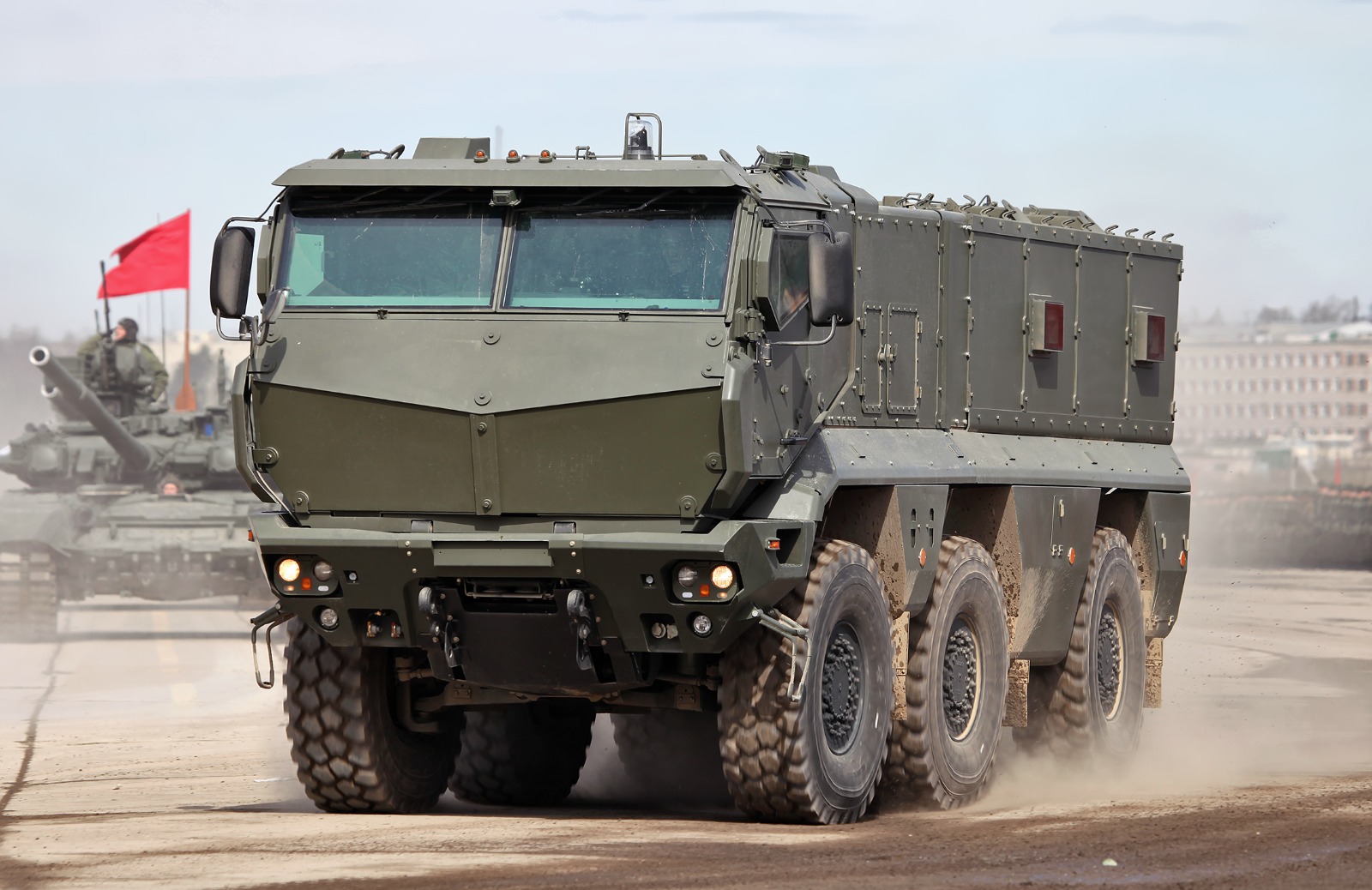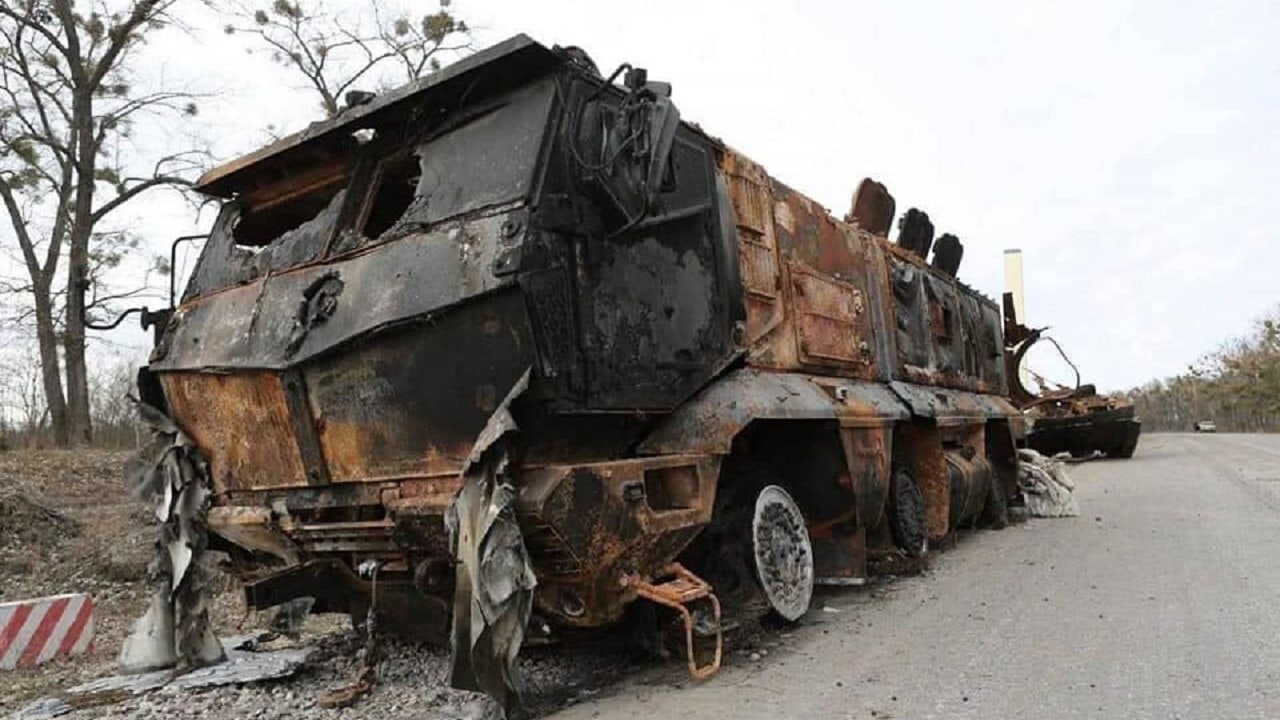Russia’s Typhoon series of armored fighting and mine-resistant vehicles will soon see service in the Far East, as Moscow sees rising threats from the US, Japan, and the North Atlantic Treaty Organization (NATO) on its eastern seaboard adjoining the western Pacific.
Russian Defense Minister Sergei Shoigu recently said that the Eastern Military District (EMD) was being boosted with a series of weapons, including multiple rocket launch systems (MLRS) and surface-to-air missiles (SAM), ostensibly to counter any future conflict that might erupt in the region.
Addressing a meeting of the Defense Ministry Board earlier this week, Shoigu slammed Washington and Tokyo for engaging in strategic moves that Moscow perceived as a threat to its sovereignty.
Shoigu said the “confrontation” with North Korea served as a means towards this end. The US-Japan-South Korea grouping is being pushed to challenge the emerging Russia-North Korea-China axis, according to Russian strategic affairs experts.
Shoigu’s statement has broadly validated prior EurAsian Times analysis about the subject. Russia, also an Indo-Pacific/Asia-Pacific nation, shares the contiguous maritime zone in far northeast Asia with the western and southwestern Pacific. It sees NATO’s rising dalliance with Japan and Taiwan as an attempt to open another front to contain Russia — a perception shared by Beijing. The increasing Russian and Chinese naval and air drills in the Sea of Japan are in response to these moves.
Shoigu Slams US, Japan For ‘Needling’ Russia In Far East
Shoigu said Washington continues to “use the rising tensions on the Korean peninsula and around the island of Taiwan” as a “pretext for the expansion of its troop presence in the Western Pacific.
This year, the scope of joint exercises between the United States and its allies is expected to increase due to the military capabilities of NATO member countries,” Shoigu said.

This thought does not point to Far East Asia but refers to the US policies in Europe and the war in Ukraine. However, the fact that Shoigu mentioned it in the context of outlining the activities of the EMD means Russia sees Washington’s Indo-Pacific strategy as an extension of its anti-Russia moves with European NATO member countries.
Shoigu added: “In order to strengthen the military security of Russia’s eastern borders, we are taking measures to build up the combat capabilities of the Eastern Military District.”
He said the recent “State Defence Order” had sanctioned “more than 200 units of modern and modernized equipment to be delivered in 2024, including Tornado-S MLRS, Tor-M2 surface-to-air missile systems, and Typhoon armored fighting vehicles.”
Russia’s main effort will focus on training reserve battalions as well as upskilling junior specialists and UAV operators. The Eastern Military District’s troops will also take part in four joint international exercises involving the Armed Forces of Mongolia, India, Laos, and Vietnam.
Utility In The Far East Region
While it is not clear how land systems will be used in a largely maritime theater like the far northern part of the Western Pacific, an inference can be drawn about Russia’s dispute with Japan over the Kuril Islands. In February last year, Russia’s EMD conducted military drills on the Kamchatka Peninsula, just north of the disputed Kuril Islands, surrounded by the Okhotsk Sea, the North Pacific Ocean, and the Sea of Japan.
That exercise came a day after NATO Secretary General Jens Stoltenberg met Japanese PM Fumio Kishida in Tokyo and slammed Russia and China for “leading an authoritarian pushback against the international rules-based order.” In a joint statement issued later, the two leaders raised concerns about Russia’s growing military cooperation with China, including joint drills around Japan’s coasts.

Then, in April 2023, Russian nuclear-capable Tu-22 strategic bombers flew over the Sea of Japan, forcing Tokyo to scramble its own F-15 fighters. The Russian Ministry of Defense (RuMoD) said the exercise was meant to “simulate strikes against mock ship groups.”
Typhoon Armoured Vehicle Destroyed in Ukraine
The Typhoon family of armored fighting and mine-protected vehicles are Russia’s latest land systems meant for tactical battlefield logistics and troop transport. It comprises variants like the Typhoon-K light tactical vehicle and truck, which are based on the main vehicle manufactured by military automobile maker KamAZ. This includes the KamAZ-63968 Typhoon-K and the KamAZ-63969 Mine-Resistant Armor Protected (MRAP).
The vehicle also saw sparse action in the ongoing war, with one that was lost to heavy Ukrainian fire in the early days of the war in March 2022. This was the Typhoon MRAP, which photos showed was completely charred on the side of a road. The General Staff of the Armed Forces of Ukraine said on Facebook that the vehicle was no longer the pride of the Russian defense industrial sector.
“There is no analog. Pride of Russian OPC – Kamaz Typhoon,” the Ukrainian military said. While it was not clear what destroyed the vehicle, the pictures suggest it could have been a large mine placed on the road or air-to-ground munitions.
‘Generating Interest Following Improvement from War Lessons’
Earlier this year, however, TASS quoted Russian defense industry officials saying Moscow’s “Middle East partners” were “showing significant interest in Russian vehicles of the Typhoon family” after they became “aware of the improvements” that were made.
This was on the sidelines of the World Defense Show in Saudi Arabia. “Russian MRAP-class armored vehicles for various purposes have received serious development during a special military operation, and our partners know that they are created and modified taking into account experience work in combat conditions,” Rosoboronexport Director General Alexander Mikheev said.
- The author can be reached at satamp@gmail.com
- Follow EurAsian Times on Google News




